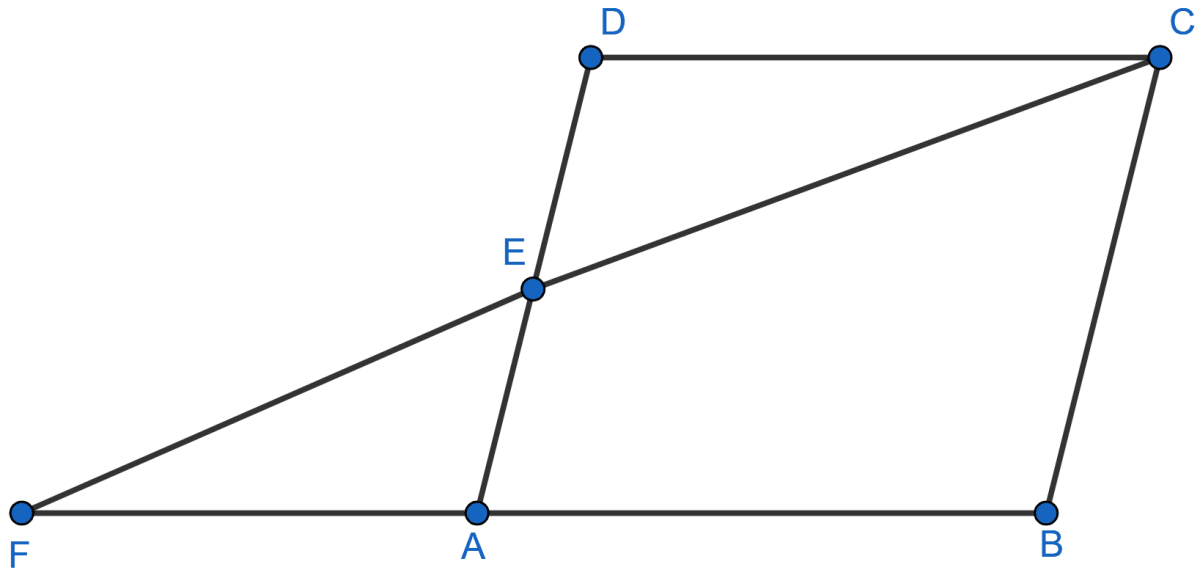Mathematics
If AD = 5 cm and BD = 2 cm, then area of △ ADE : area of trapezium DBCE is equal to :
5 : 2
2 : 5
24 : 25
25 : 24

Similarity
4 Likes
Answer
From figure,
In △ ADE and △ ABC,
⇒ ∠DAE = ∠BAC (Common angle)
⇒ ∠ADE = ∠ABC (Corresponding angles are equal)
∴ △ ADE ~ △ ABC (By A.A. postulate)
From figure,
AB = AD + DB = 5 + 2 = 7 cm.
We know that,
The areas of two similar triangles are proportional to the squares on their corresponding sides.
Let area of △ ADE = 25x and area of △ ABC = 49x.
From figure,
Area of trapezium DBCE = Area of △ ABC - Area of △ ADE = 49x - 25x = 24x.
⇒ Area of △ ADE : Area of trapezium DBCE = 25 : 24.
Hence, Option 4 is the correct option.
Answered By
2 Likes
Related Questions
The given figure shows a parallelogram ABCD. E is a point in AD and CE produced meets BA produced at point F. If AE = 4 cm, AF = 8 cm and AB = 12 cm, find the perimeter of the parallelogram ABCD.

In the given figure, AE = 5 cm and EC = 7 cm, then area of △ ADE : area of △ ABC is :
5 : 7
7 : 5
25 : 144
144 : 25

In the given figure, AD : DB = 2 : 5, then area of △ ODE : area of △ OCB is :
4 : 49
49 : 4
4 : 25
25 : 4

In the given figure, area of △ ADE : area of trapezium BCED = 25 : 39, then AD : BD is :
5 : 8
8 : 5
3 : 5
5 : 3
